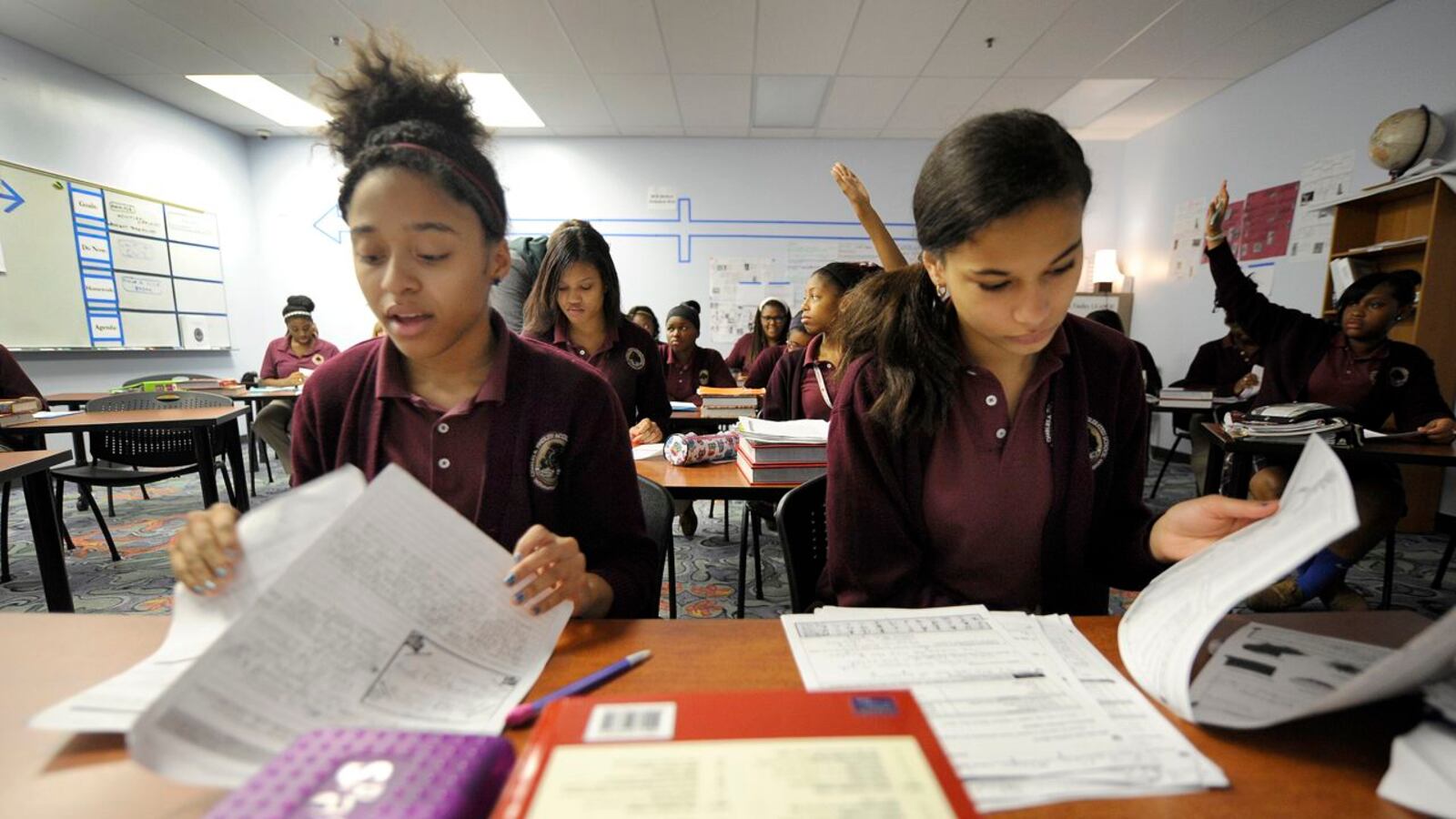Nearly two decades after charter schools started operating in Indiana, officials have released the first state-mandated report on what they look like and how they’re doing.
The report is required under a bill lawmakers passed in 2015, and it will be repeated every five years. It covers enrollment trends, academic achievement, student demographics, and funding. The idea for the report came from a broader charter school bill designed to strengthen oversight and discourage “authorizer shopping.”
“We have a very robust charter sector in our state but … we want to make sure we have high quality charters that serve the needs of students,” said the bill’s author, Rep. Bob Behning, when the bill was introduced.
Last year, Indiana was home to 93 charter schools that enrolled 44,444 students, most of which attended brick-and-mortar schools, as opposed to online schools or adult high schools. Charter school students represent almost 4 percent of Hoosier students, and tend to have higher state letter grades than similar district schools.
However, when it comes to state letter grades, charter schools have certain advantages. For one, adult high schools are graded using a different formula, and innovation schools can opt to use a more generous yardstick that only factors in test improvement.
Below, we pulled out nine interesting facts from the report, which can be found in its entirety here. The Indiana State Board of Education is expected to discuss the report at its meeting Wednesday.
- Charter school enrollment has grown slowly in recent years — up less than one percentage point since 2012.
- While district students as a whole did better on state tests than those in charter schools, students of color in charter schools posted better results than their peers in district schools.
- Since 2011, 24 charter schools either decided to close on their own or were closed by their authorizers.
- Of the state’s eight authorizers, three oversee most of the state’s charter schools: The Indianapolis mayor’s office (35 schools), Ball State University (28 schools), and the Indiana Charter School Board (17 schools).
- The Indianapolis mayor’s office has the highest share of schools rated A and B at 50 percent, compared to the state charter school board at 41 percent and Ball State at 21 percent.
- Forty-three percent of students living in the Gary public school district attend a charter school. Twenty-eight percent of students living within Indianapolis Public Schools do.
- More than half of the state’s charter school students live in urban areas, with the highest numbers coming from Indianapolis, Gary, South Bend and Anderson. Indiana charter schools serve larger percentages of students living in poverty than traditional district schools.
- Indiana charter schools serve about the same percentages of students with disabilities and lower percentages of students learning English as a new language as traditional district schools.
- Virtual charter schools are notable exceptions in several areas. Compared to typical charter schools, their student populations are far more white and come from families with higher incomes. Virtual school students also tend to do worse on state tests and make less improvement from year to year.

